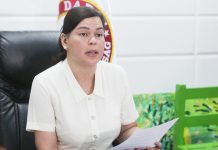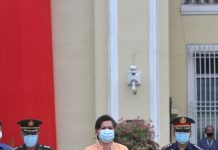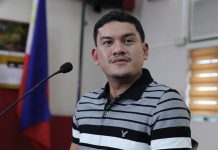Mainly targeting women and children among internally displaced persons (IDP) in Mindanao areas, recruiters and traffickers have found a pool of potential labor force in IDP camps in the guise of relief providers.
An action research on women displacement and migration was conducted last April to July by the Mindanao Migrants Center for Empowering Actions, Inc. (MMCEAI), funded by Oxfam, an international non-government organization advocating pro-poor and pro-women government policies and practices in the areas of climate change, trade and agriculture.
Presented by Inorisa S. Elento, executive director of (MMCEAI), during the Mindanao IDP Summit at the Ateneo de Davao University last November 22, the research examines the inter-relation between internal displacement caused by the Mindanao conflict and possible incidents of human trafficking.
“Due to massive disruptions of social and economic activities, the destruction of lives and property, displacement and human insecurity create situations that are ripe for trafficking,” it states.
Elento said the study was conducted in seven municipalities of the Autonomous Region of Muslim Mindanao (ARMM), and Lanao del Sur. The research group visited IDP camps in these areas and gathered data from the accounts of 130 respondents.
She added that the Department of Foreign Affairs, Overseas Workers Welfare Administration, ARMM and the International Organization for Migration had recounted that the number of applications for overseas deployment increased during ‘war’ in these parts of Mindanao.
“What triggered our research were the complaints of whereabouts of two children reported to be missing in 2008 after being recruited in IDP camps in Kolambugan, Lanao del Norte,” Elento said.
Although they have not verified it yet, Elento’s group was informed that one of these children, age 12, was employed as a local domestic helper while the other, 14, was deployed also as domestic helper somewhere abroad. Some say they were involved in the sex trade, she added.
Because recruiters and traffickers pose as relief providers—giving hope to the displaced not only through food and clothing but employment—human groups which are also regular visitors in IDP camps, noticed recruitment activities among the IDPs but not to the extent of trafficking, she said.
“The first week, month and early period of their stay in the IDP camps were documented as a crucial period. Recruiters and traffickers mingled and introduced themselves as advocates and/or relief providers to lure people to work for them. It will entice family members to be their agents,” stated the research presentation.
“Majority of the respondents have relatives in other countries, mostly in the Middle East, Gulf countries, Malaysia and Singapore. Not only were they told that they could provide money for their family back home, but they could also practice their religion in the foreign land. But most of these OFWs did not finish their employment contracts due to harassment and abuses done by their employers,” Elento said.
Based on research findings, the incidence of human trafficking is very evident in forms, age target, and ways of recruitment; recruited individuals voluntarily submit to falsify travel documents to facilitate fast-track deployment.
Ending the ‘war’ as primary recommendation based on the study, the MMCEAI also recommends that humanitarian protection should include social protection of the affected people; give cash assistance to the victims; extend legal, trauma and therapy assistance; improve conditions in shelter homes or half-way centers; educate evacuees on illegal recruitment and trafficking; facilitation to formal education, and livelihood development.






